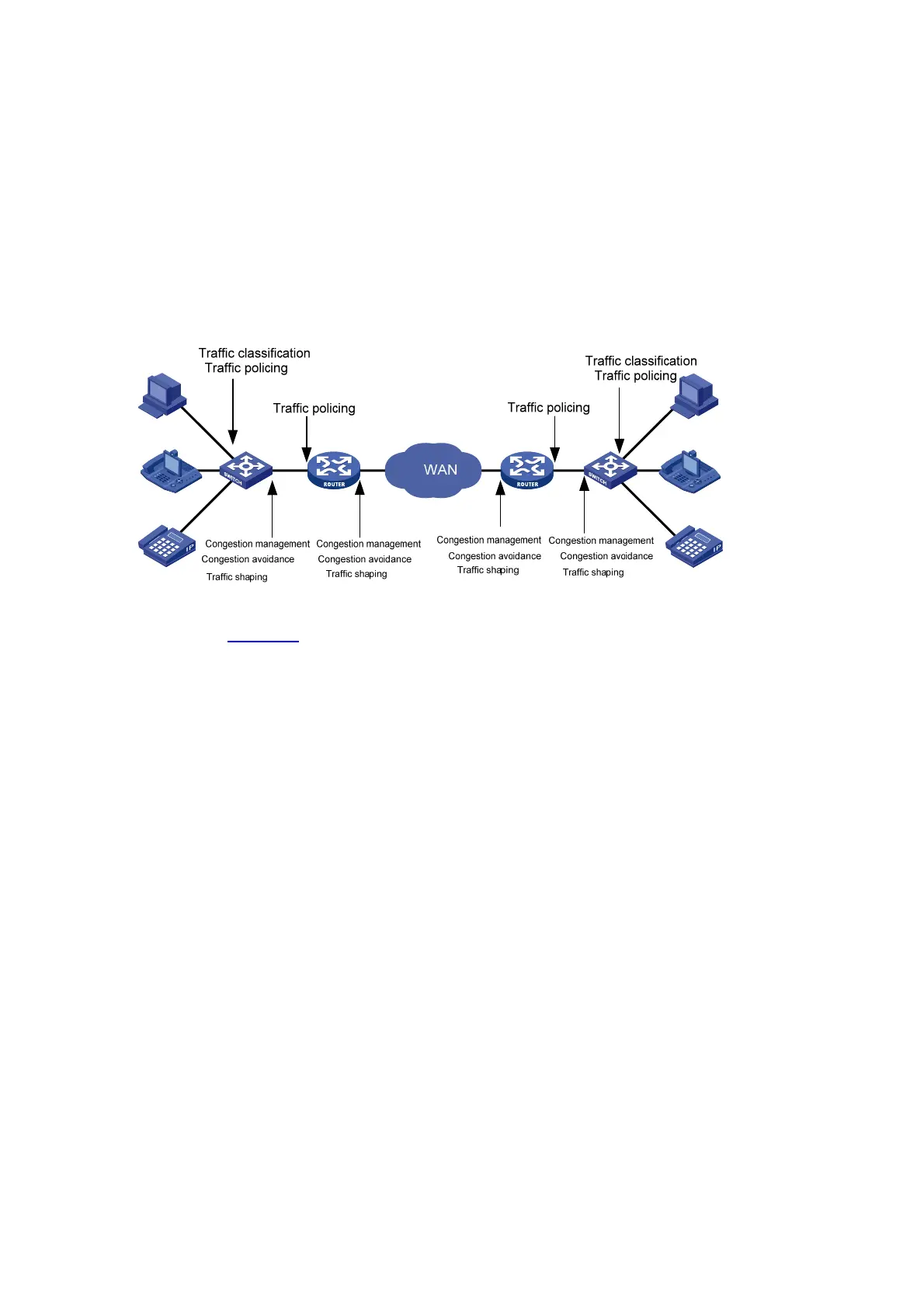1-3
A more effective solution is to provide differentiated services for different applications through traffic
control and resource allocation. In this way, resources can be used more properly. During resources
allocation and traffic control, the direct or indirect factors that might cause network congestion should be
controlled to reduce the probability of congestion. Once congestion occurs, resource allocation should
be performed according to the characteristics and demands of applications to minimize the effects of
congestion on QoS.
Major Traffic Management Techniques
End-to-end QoS model
Figure 1-2 End-to-end QoS model
As shown in
Figure 1-2, traffic classification, traffic policing, traffic shaping, congestion management,
and congestion avoidance are the foundations for a network to provide differentiated services. Mainly
they implement the following functions:
z Traffic classification uses certain match criteria to organize packets with different characteristics
into different classes, and is the prerequisite for providing differentiated services. Traffic
classification is usually applied in the inbound direction of a port.
z Traffic policing polices particular flows entering a device according to configured specifications and
is usually applied in the inbound direction of a port. When a flow exceeds the specification, some
restriction or punishment measures can be taken to prevent overconsumption of network
resources and protect the commercial benefits of the carrier.
z Traffic shaping proactively adjusts the output rate of traffic to adapt traffic to the network resources
of the downstream device and avoid unnecessary packet drop and congestion. Traffic shaping is
usually applied in the outbound direction of a port.
z Congestion management provides measures for handling resource competition during network
congestion and is usually applied in the outbound direction of a port. Generally, it stores packets in
queues, and then uses a scheduling algorithm to arrange the forwarding sequence of the packets.
z Congestion avoidance monitors the usage status of network resources and is usually applied in the
outbound direction of a port. As congestion becomes worse, it actively reduces the amount of traffic
by dropping packets.
Among these traffic management technologies, traffic classification is the basis for providing
differentiated services by classifying packets with certain match criteria. Traffic policing, traffic shaping,
congestion management, and congestion avoidance manage network traffic and resources in different
ways to realize differentiated services.
